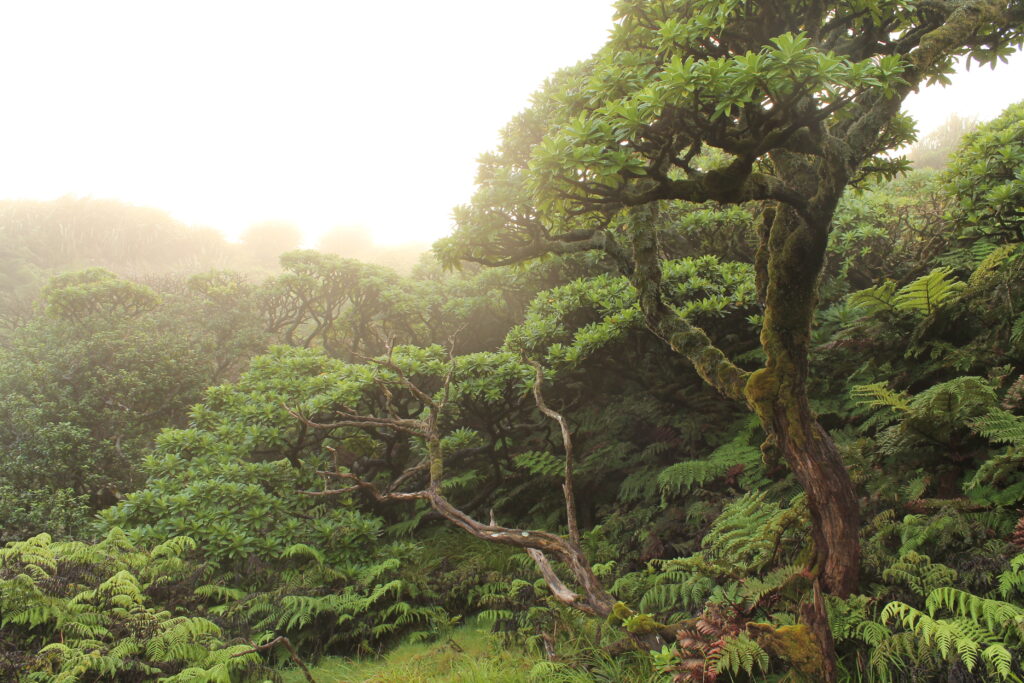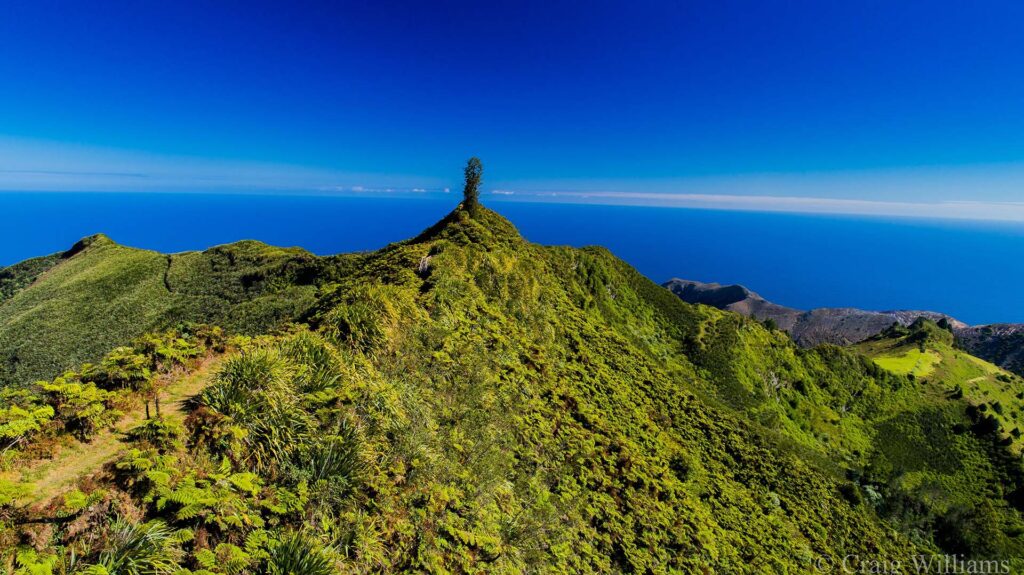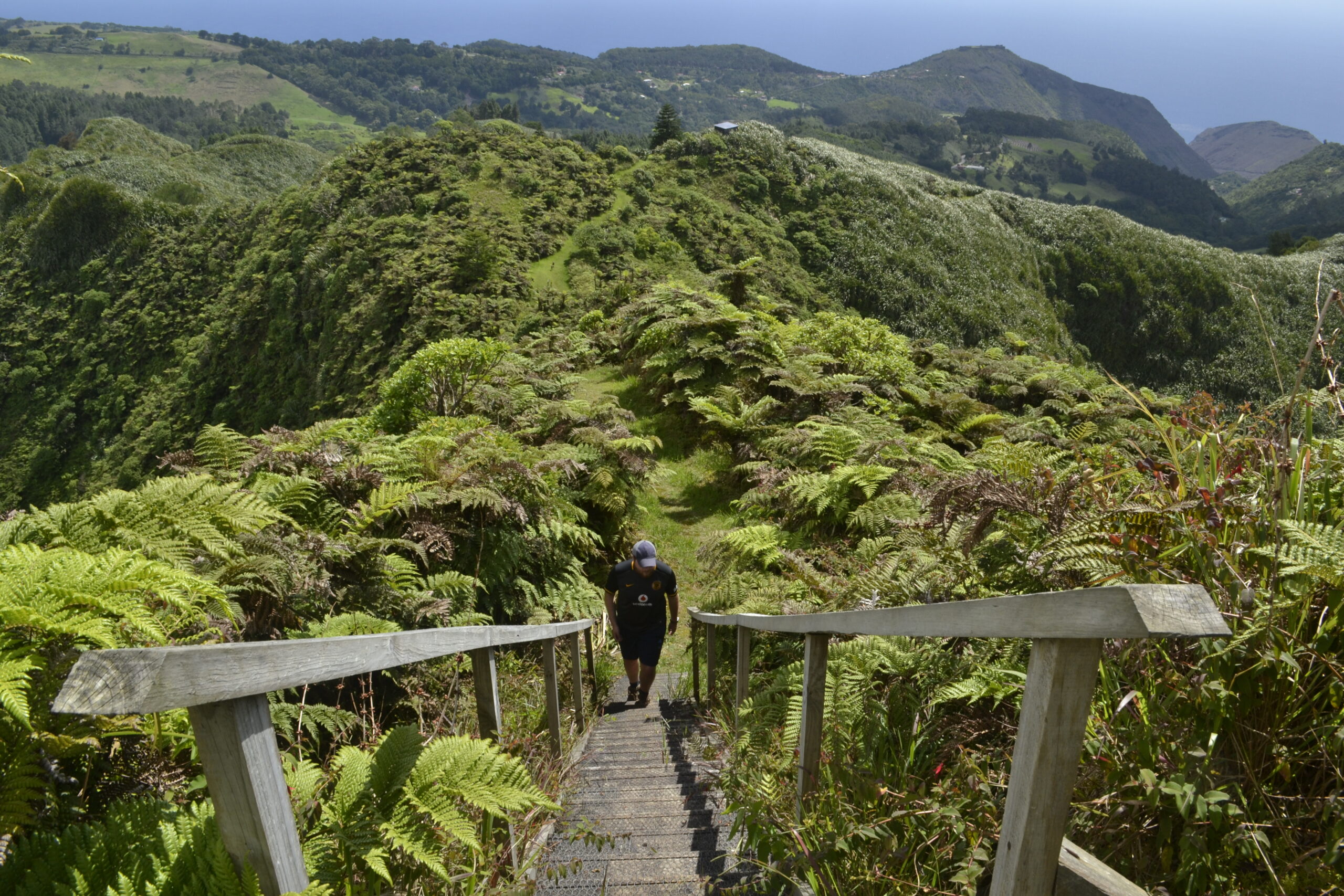In the middle of the Atlantic Ocean, at the heart of one of the world’s most remote islands, lies a misty, ancient forest of global importance. An impressive collaborative effort seeks to save the last natural cloud forest on British soil.
First things first, what is a cloud forest?
Cloud forests are found in tropical or subtropical mountainous regions where the trees are constantly shrouded in mist. They cover less than 0.4% of the world’s land area but are home to an estimated 15% of all species.
The British Overseas Territory of St Helena is just 121 square kilometres and sits almost 2000 km off the west coast of Africa. The isolated island is home to a globally significant habitat, with staggering amounts of flora and fauna found nowhere else on the planet. Found at the heights of St Helena’s Peaks National Park, the cloud forest is home to 250 species of plants and invertebrates and holds over one sixth of the UK’s and overseas territories’ total endemic biodiversity. The cloud forest is also vital for St Helena’s water resource – supplying the majority of the island’s water through mist capture and groundwater recharge – enabling it to adapt to and mitigate against climate change.
Managed by the Royal Society for the Protection of Birds (RSPB) and majority funded through the UK Government’s Foreign, Commonwealth and Development Office (FCDO), the St Helena Cloud Forest Project (SHCFP) is a multi-year, multi-partner undertaking that aims to inform and secure the island’s water security and climate change adaptation efforts, and safeguard an internationally important wildlife hotspot from further decline. Work focuses on improving, restoring and creating the cloud forest habitat, as well as conservation of the species found on the peaks.


Restoring the biodiversity of the area is only one aspect of the project. Utilities provider Connect St Helena and the St Helena Met Office team, with input from consultants Arctium, are leading the water management side of the SHCFP. Their work involves setting up island-wide climate and water monitoring networks, the results of which will be collated to inform the National Water Resource Management Plan and drive restoration activities to increase vegetation around the cloud forest habitat boosting mist capture and swell ground water supply. The restoration is crucial to ensure the island’s water security for years to come.

The Peaks National Park has been voted one of the island’s “7 Wonders” by the population of some 4,400 St Helenians, emphasising its cultural value and significance as a visitor attraction. A network of popular hiking trails through the park takes in the island’s highest points – Diana’s Peak (820m), flanked by Mount Actaeon and Cuckold’s Point – offering breath-taking views of the entire island.
Collaboration is the key to success and together many teams are striving to ensure that the cloud forest can reach its full potential as an internationally important wildlife hotspot, where locals and visitors take advantage of opportunities presented through education and ecotourism.

For further information on the cloud forest project, visit https://www.sthelenatourism.com/st-helenas-cloud-forest-project/
For more information on St Helena Island, please visit the St Helena Island profile on Inspire Global Marketplace, where you will find further information, images and resources.
Words by the St Helena Island


Recent Posts
Categories